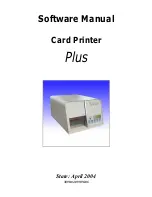
The
Speed
page covers parameters that control how fast various features of the object
are printed. The speeds are listed in mm per second, or as a percentage of a related speed
parameter.
The speed parameters are pretty
self-explanatory, especially if you've got the
Show Help
check box set. However,
there's a couple of points I'd like to cover
about printing speed.
First of all, there is a relation
between your print speed and the
temperature you've set for the material
you're printing with. The basic rule is, the
faster you go, the hotter you print. This is
because as the hot end extrudes plastic, it's
constantly being cooled by the cold filament
that's coming in.
Setting the extrusion temperature
higher allows the hot end to melt the
incoming plastic at a faster rate. This allows
you to print more quickly. The relation
between print speed and extrusion
temperature is one of those things you'll get
a feel for as you gain experience with your printer.
You'll quickly learn that the Orion will “talk” to you if you're printing too rapidly for a given
temperature. The extruder will begin to “skip” periodically (or frequently, depending on how fast
you're going). A skipping extruder has a very distinct sound – it's kind of a light bump or
knocking. If you watch the nylon gear that you use to manually feed filament, you'll notice that it
will briefly rotate in the opposite direction at the same time you hear the skipping sound. If you
draw a line on the face of the gear, you can spot this motion more easily. The skip is caused by
the hot end's inability to melt the material is rapidly as is required. The pressure builds up until
the stepper motor can no longer generate the force required. At this point the tension in the
filament is released like a spring and the filament pushes back with enough force to cause the
stepper motor to skip steps, resulting in a short reverse rotation.
Secondly, there is also a direct relation between print speed and print quality. In the
image above, you'll notice that the speeds for print moves vary a bit. This is because some
features don't require a focus on surface quality.
Perimeters are a great example of this. You'll note that the inside perimeter speed is
40mm/sec, while the outside perimeter is 35mm/sec. The inside perimeter will never been seen
after the print is finished so it can be printed at a higher rate. However, you want the visible
surface of the print to be smoother and more consistent, so you print the outside perimeters a
bit more slowly.
75
















































